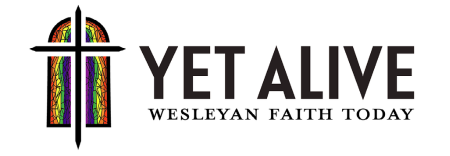
People are often uncomfortable considering the reality they might become disabled at some point in their lives. As we navigate living through the pandemic, we have yet to know and grasp the long-term consequences this will have for our world. I anticipate the rise in numbers of disabled and chronically ill people after surviving COVID-19. The Biden Administration is already recognizing people living with long COVID as a group within the disabled community. As people of faith, we lack the ability to talk constructively about the reality of our mortality and finite bodies. We are uncomfortable confronting the limitations of our embodied experience.
Regardless of ability, we all confront the reality of embodied limitation. There are things that our bodies cannot do or once could but now cannot. We are constantly renegotiating what our bodies are able to do. Second, we all face the reality that someday we will die. Our finitude can be uncomfortable to grapple with as we make sense of what it means to be human. The embodied realities of disability and chronic illness are othered rather than perceived as a part of the normative spectrum of human experience. Often the embodied, lived experiences of disabled persons, whether in antiquity or the modern era, have been set aside as tragic or rare. During the pandemic, many people grappled with their own embodied limitation and finitude. Fear of the unknown consequences of long COVID on health and body is valid. Finally, the experiences of disabled persons—which may include wearing a mask, social isolation, and an awareness of bodily limitation—were a part of life before and will be long after the pandemic.
The word disability is an umbrella term that encompasses various physical, mental, cognitive, or neurodevelopmental conditions. People are born disabled. People may become disabled because of an illness or accident. People may lose the ability to do tasks and skills they once did because of aging. The lived experiences of disabled people include a variety of symptoms, conditions, and experiences. Disabled people and their bodies represent the spectrum of what it means to be human. Through the lens of disability theology, we are invited to rethink how we understand our bodies, limitation, and human experience. Disability theology allows us to challenge normative constructs of how bodies look and the perception of disabled persons. We must consider the embodied experience of disabled persons past and present. In Disability and the Christian Tradition: A Reader, John Swinton offers this definition: “Disability theology is the attempt by disabled and non-disabled Christians to understand and interpret the gospel of Jesus Christ, God, and humanity against the backdrop of the historical and contemporary experiences of people with disabilities.” Some theologies do not celebrate, recognize, affirm, and empower the bodies of indigenous, black, female, poor, queer, and disabled persons and their personhood. The embodiment lens of theology challenges the Greek dualistic understanding that bodies, minds, and souls are separate. To carefully unravel how we talk about bodies, we have to become aware of how bodies are perceived.
Nancy Eiesland in The Disabled God: Towards A Liberatory Theology of Disability provides a constructive way to develop a liberatory approach to talking about Christ’s body after the resurrection. Jesus models for us a ministry of embodied solidarity in which his very body and self become like that of the “other.” He transfigures his body to mirror what is perceived as undesirable, “other,” beyond binary or norm. Eiesland writes, “The disabled God repudiates the concept of disability as a consequence of individual sin. Injustice against persons with disabilities is surely sin; our bodies are not artifacts of sin, original or otherwise. Our bodies participate in the imago Dei, not despite our impairments and contingencies, but through them.”[1]
In John’s gospel, Jesus newly risen appears before Thomas and the disciples to show them his disabled, wounded body. Jesus’ woundedness is a reminder that he has died, yes, as the scars of the crucifixion still on his body show. The body remembers trauma, and what Jesus has been through is traumatic. His body is not the same as before. His wounded body is imperfect, disabled, injured. It is neither a sign of divine punishment nor requiring healing. His injury is a part of who he has become, the wounded one. His brokenness is an essential part of this story. He shows the disciples the wounds: marks of nails in his hands and feet, a hole in his side.
Here is the good news: We are created undivided, whole beings in which we are both bodies and minds. We are bodies, and perhaps that phrase makes you unsettled to think about its implication both bodily and theologically. In the Creation narrative, God created all living things and called them good. Our bodies are inherently good, even bodies that are broken, scarred, and imperfect. Disabled bodies are good bodies. Disability is not the result of sin or divine punishment but a part of the human experience. Jesus as disabled shatters social expectations of what bodies look like. We are our bodies, and God cares about what happens to our bodies. And Jesus’ disabled body might even look like your body.
[1] Nancy L. Eiesland, “The Disabled God,” in The Disabled God toward a Liberatory Theology of Disability (Nashville, TN: Abingdon Press, 1994), p. 101.

Sara Martin
Sara Martin is a seminary student at Saint Paul School of Theology and a local licensed pastor serving in the Oklahoma Annual Conference. She frequently writes from her perspective as a disabled person, pastor, and aspiring theologian. You can find more of her informal work on disability advocacy on Twitter under the username @GenZPastor.
